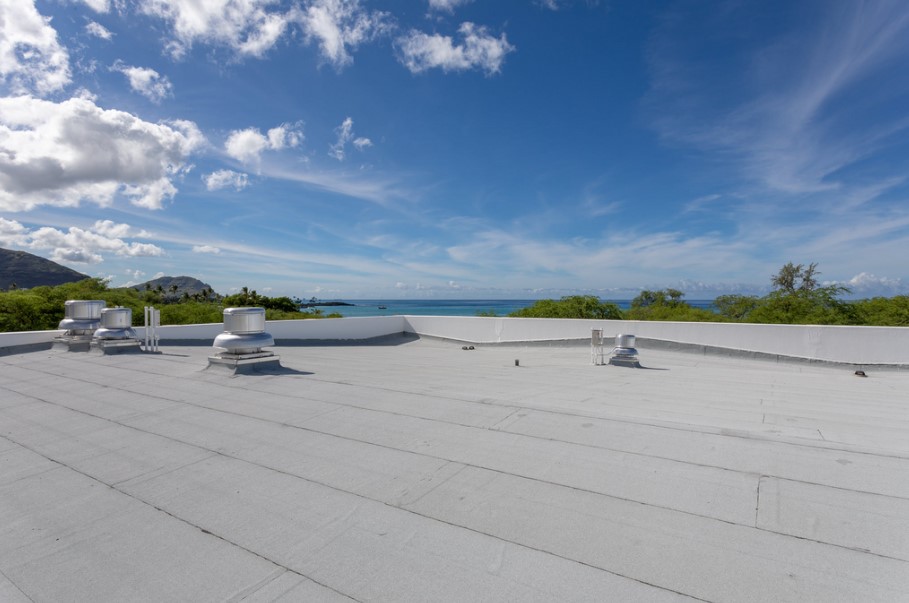
Since water drains less quickly from low-slope roofs, the materials selected must withstand exposure to pooled water. Additionally, freezing and thawing of that water must be taken into consideration, too.
Other key issues that can occur are leaking and condensation. Leaks often travel laterally and can leak into buildings far from the source.
Ponding
The first thing to understand about low slope roofing Stamford CT, is that it requires special attention regarding water drainage and waterproofing. One of the most common problems that arises is ponding water. This occurs when the rainwater can’t drain due to insufficient roof slope or the drainage system is clogged.
Insufficient roof slope is the most common cause of ponding, but other factors can also lead to the problem. For example, installing an HVAC unit or other rooftop equipment can result in localized insulation compression, leading to a sagging roof surface that provides a suitable place for rainwater to collect.
To avoid ponding water, it’s recommended that flat and low-slope roofs have at least a 1/4 inch per foot roof slope to promote proper drainage. This may involve re-installing scupper boxes, installing new drains or gutters, repairing or replacing parapet scuppers, and raising existing insulation to fix low spots.
Cracking
Whether it’s a commercial or residential flat roof, cracking can cause moisture to leak into the building. This can damage and erode internal structural supports and cause further issues like mold and rot.
Because the minimum slope of low-slope roofs means that water and snow take longer to shed, a greater percentage of it pools on the top. This can increase ponding, shortening the lifespan of asphalt-based materials and creating areas where moss and algae grow.
As such, low-slope roofs need special attention regarding water drainage and waterproofing. This includes regular inspections and using the right roofing materials for their unique needs. Single-ply membranes like TPO, PVC and EPDM are great for low-slope roofs.
Algae
The ugly black streaks, stains and dark spots on shingle roofs are caused by hardy algae. It develops from spores that require a moist surface to survive and spread. The limestone filler in shingles provides the nutrients that allow algae to thrive and darken your roof.
Algae stains are more than just unsightly; they cost you money. The algae absorb the sun’s heat, making your air conditioner work harder to cool your home.
Many shingle suppliers and manufacturers offer algae-resistant systems. However, the exact formulations are not transparent. The NRCA recommends that roofing customers make purchasing decisions based on objective evidence of product performance rather than warranties. Atlas Roofing Corp, Meridian, Miss; CertainTeed; GAF Materials; IKO; Malarkey Roofing Products; PABCO Roofing Products and Owens Corning did not provide information regarding the formulations of their algae-resistant systems.
Water Damage
Leaks are every building owner’s worst nightmare. They can damage inventory and contents, leading to costly structural damage if left unchecked.
With less of a pitch than steeper roofs, low-slope roofing systems are prone to water damage if drainage could be more efficient. Standing water can deteriorate a roof’s membrane and shorten its life, especially in cold climates.
Regular inspections and maintenance can help prevent these issues from developing. Choosing a reputable roofing contractor who uses high-quality products will also help minimize post-installation problems. For the best results, inspect your roof regularly to catch any small issues before they become larger. Also, make sure your drainage pathways are free of obstructions. This will help channel water away from your roof and prevent any ponding.
Failing to Repair
If you don’t regularly inspect your flat or low-slope roof, you may miss small problems that can become bigger over time. These problems often lead to leaks that can damage your interior and cost you a lot of repair expenses.
Leaks are a common problem for both new and existing commercial roofs. When a membrane is compromised, water enters the roof and can travel laterally, causing serious interior damage.
A reputable roofing professional can repair these problems before they become major headaches. They can unclog internal drains and parapet scuppers, raise depressed insulation, and reshape existing insulation to provide the correct slope for the roofing system. They can also install guardrails on the roof to prevent workers’ boots from puncturing the roofing membrane.
